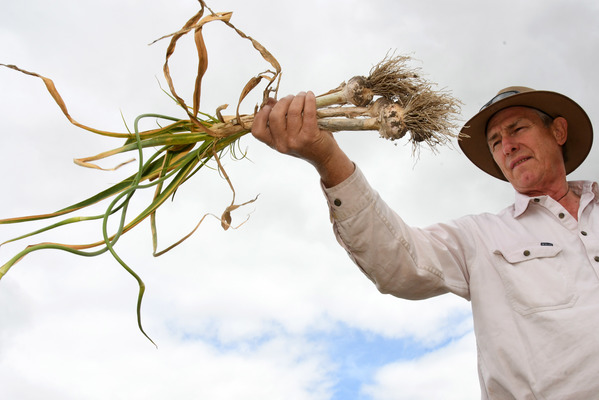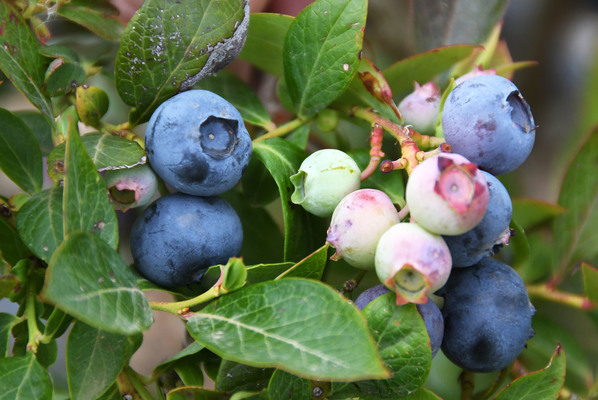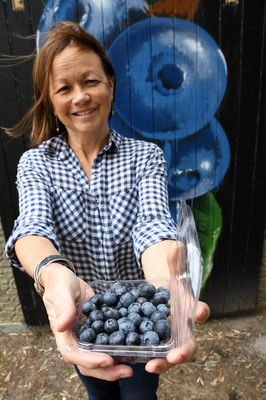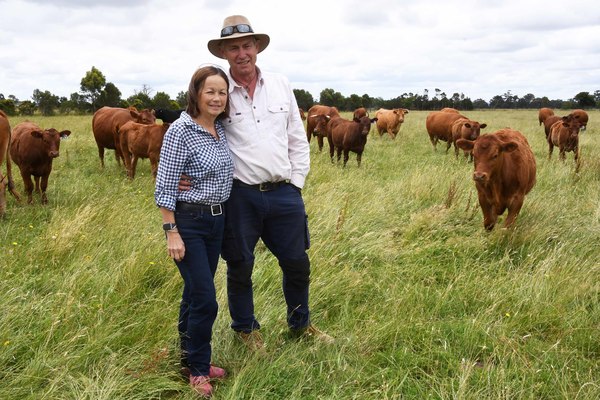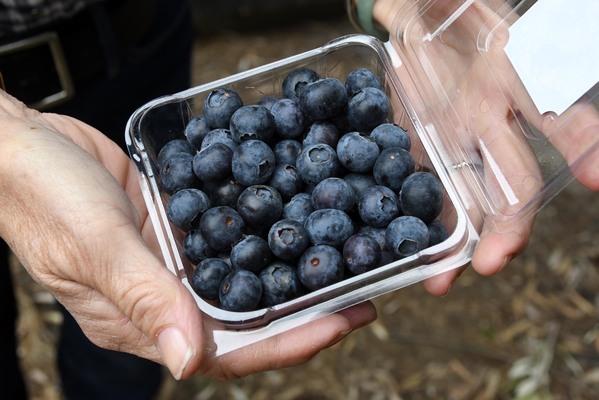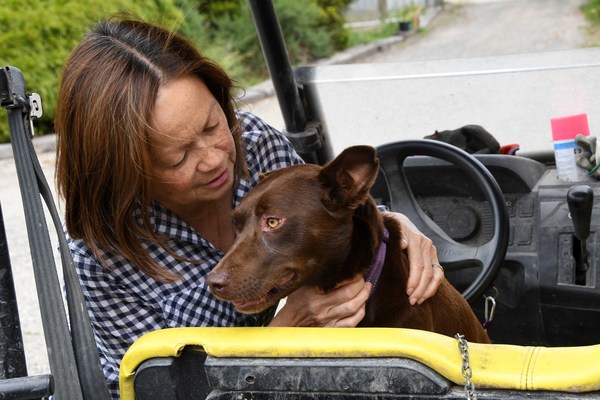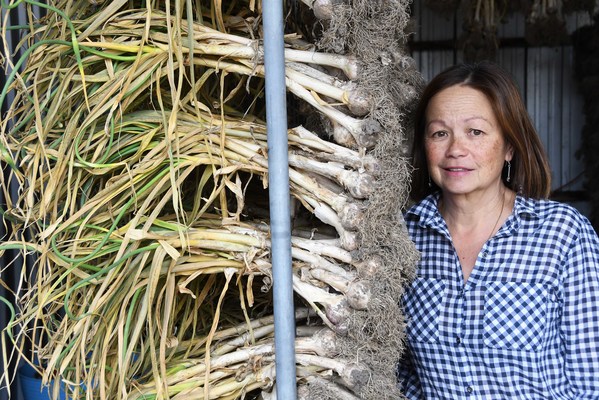With their beef farm running at full capacity, Tony and Sue Morgan have looked at other avenues for growing farm income, utilising a farming approach known as ‘layering’ to generate valuable farm-gate sales of organic niche crops, as ANDREW CANTWELL reports.
“We’re always thinking about what the next layer might be … it can’t impact on the existing enterprises.”
Things look good at Tony and Sue Morgan’s diversified beef operation, run on two properties totalling 125 acres between Kooweerup and Bayles.
Conditions had been optimal in the last year for grazing – with a drier winter and good spring rains.
The pasture growth had been so good, the cows had barely made an impact on the northern paddock the day the Gazette visited.
However, it’s not the beef that keep the Morgans busy at this time of year, but rather their other ‘layered’ enterprises – organic garlic and blueberries.
The garlic crop came in late last year, and the blueberry season is in full swing.
Layering – a concept championed by US organic farmer Joel Salatin – aims to turn slack times in the farming calendar into profitable times.
The idea is additional enterprises on top of the main farming operation that fill in a quiet time or an unused portion of farm land – to make every part of the farm operation pay.
There are other elements to the Salatin way of farming that emphasise the artisinal, localised and seasonal production and consumption of farm produce – as opposed to the industrial-scale food production and transport systems in the US – that still spark controversy.
But it’s the good business sense of a diversified operation that appeals to the Morgans.
In their case, the three enterprises don’t impact on each other – the garlic and blueberries have been thoughtfully selected to complement the beef season. And then have been tested over the last handful of years to make sure the crops are a good fit.
The organic aspect is also appealing to the Morgans, who aim to deliver the crops as tasty as nature intended – without the taint of chemical pesticides or weedicides, as much as possible.
Certified organic, the garlic and blueberry operations are audited periodically, and the paddock hosting the crops is closely monitored for the best outcomes.
Although they’ve been growing the garlic and blueberries for the last three or four years, the Morgans still consider they’re in an establishment phase and are not looking seriously at further layering in the near future.
Tony said the aim for the next few years would be to consolidate and maintain what was currently in place, and to look at improving management systems.
But they’re also looking at ‘quiet’ times in the combined operation that could be utilised in the future.
“We’re always thinking about what the next layer might be. It can’t impact on existing enterprises”.
The main and longest established enterprise is beef. Tony and Sue run up to 120 cattle on the two properties. A few cattle had been sold off in the last few months and about 80 – including 40 breeders – graze the lush pasture.
With the beef, the farming calendar is fairly well established. Tony said the pair even time calving so that they can get away for a few weeks in the middle of the year.
The herd is predominantly Limousin. This year a Red Angus bull had been put over the herd for 50/50 offspring. The aim was to grow cattle to about 500kg for market.
Prices in recent times had been bolstered by, of all things, African Swine Fever.
With half the world’s pigs killed by the bug – and 75 per cent of China’s pig herds – the massive Chinese market had been turning to chicken, lamb and beef for protein – leading to a world-wide shortage of protein.
Tony said the prices for his market cattle had been good, and would only go north from here.
There was also movement in the US market, Tony said.
While there was “something going on there”, he was unsure what the opportunities might hold. But it’s a market he’s watching with interest.
“It’s a very interesting time,” Tony said. “In the last five years we’ve done very well”.
But running at or near capacity means that unless more land is brought in, the opportunities in beef must remain untapped.
And then there’s always the risk of the markets going south in a few years.
That’s where the other crops come in.
The garlic and blueberries tap in to a niche, premium market that offer good returns for the effort – and land – required.
The garlic is densely planted in several rows with an organic certified weedmat laid over the ground – just to reduce the manual weeding needed. A natural seaweed-based fertiliser is used, in keeping with the certified organic focus.
The garlic bulbs are moved slightly each year on a three to four year rotation.
“You can’t plant them back in the same ground,” Sue said.
About 300kg to 400kg of garlic will be marketted this season, and the crop is still in an establishment stage, and expected to yield more in coming years.
And it’s a taste that the buyers crave, paying about $30 a kilogram through farm-gate sales and distribution to local quality food markets and a specialist organic market in inner Melbourne.
“There’s a surprising demand for Australian-grown organic garlic,” Tony said.
In fact demand outstrips what Australian growers can produce, and garlic is imported to fill the gap.
But the garlic brought in to Australia must undergo biosecurity measures that see the bulbs dipped in chemicals and bleached, to kill any travelling nasties.
The ‘clean’ taste of garlic is all you’ll get in the Morgans’ crop.
The blueberry side of the business is advertised in the most colourful way … pride of place on the side of a shed at the farmhouse is a vibrant mural of blueberries, painted by Sue’s nephew Jackson Joeng, a street artist and graphic designer.
The blueberry harvest started in December and will go through to mid-February, depending on the weather.
The Morgans expected to pick 500kg to 600kg over that eight to 10 weeks.
The berries are packed in punnets of 150g and 500g sizes, selling for $5 and $15 respectively. For those with business sense, that’s also between $30 to $32 per kilo, resulting in a tidy return for the growing season.
Rabbits, birds and other fruit-thieving critters are held at bay by the simplest of techniques.
Above the blueberry field, three kites – in the shapes of birds of prey – fly, attached to poles.
Watering is automated – tied to a weather station that constantly monitors rainfall, and ground conditions. In December, Tony said the system made sure each bush received about four litres a day.
The station sends updates wirelessly to a base station, and then to the ‘cloud’, allowing Tony to monitor and control the system remotely from his mobile phone.
But the system is “only as good as its program”, Tony said. And supplementary water is being applied to the bushes to ensure the fruit remains plump.
Water availability was a concern, Tony said.
Although he lives next to the Bunyip Drain, Tony is only permitted to harvest rainwater from his shedding, which feeds a 250,000-litre tank.
The area was rated as a 750mm yearly rainfall area, but only about 680mm had fallen this year.
And the hot weather is still to come.
“I’ll be buying water in this season for the blueberries,” he said.
So, water aside, what’s next for the farm?
Tony, again emphasised the consolidation of the garlic and blueberry operations, but pointed to pictures on his phone of an exotic berry-bearing plant.
“We’re always looking for something that provides a point of difference”, Tony smiled.

